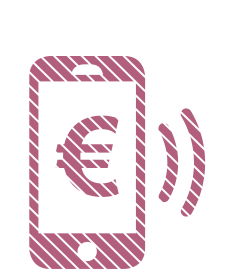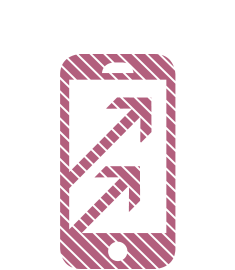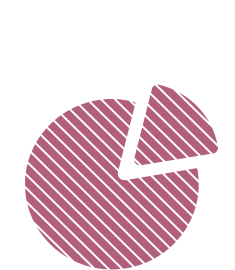Connected Beauty: The Dawn of a new era

The largest beauty company in the world is digitally re-engineering the beauty experience to reach the next billion consumers.
With 4 billion queries annually, “Beauty” is one of the most searched terms on internet [2]. Intuitively though, beauty and technology do not go hand in hand. Consumers prefer the real experience – seeing what a product looks or smells like, before making a decision. More recently, a new hybrid millennial consumer is emerging, who is mixing online and offline channels as sources of information and purchase. For instance, when shopping in store 80% of women in US use their smartphone to get product details before they buy it [6]. Meaning, there could be up to 40 points of contact before a purchase even takes place [6].
Beauty and Digital: A Perfect Match
L’Oréal the global leader in beauty, clocking revenues of $28 billion [15] is integrating technology into its new age digital beauty model. With beauty market projected to cross $461 billion revenue by 2018 [3], that’s a 4.5% CAGR over 5 years [3], the company has appointed a Chief Digital Officer in its Executive Committee and launched a “GMAT for Digital” training program to get internal teams onboard its transformation agenda. L’Oréal’s mandate is clear: Be No. 1 in the digital beauty through early adoption of e-commerce, lovemark consumer interactions and engaging data technologies to capture the next billion consumers.
- Acceleration of E-Commerce: With 87% of people expected shop online by 2020 [9], L’Oréal has forged winning online partnerships to secure 75% of web revenues from indirect sales [6]. In fast-growth countries like India, Brazil and China, L’Oréal is investing to support the digital explosion, locking global agreements with Amazon, eBay and Alibaba that provide structure for national partnerships. In mature markets, such as Europe and North America, L’Oréal’s is working with long-standing retailers like Carrefour and Walmart as they make the move to e-commerce. In Brazil, Africa, Indonesia and Middle East where conventional offline retail networks are spread out, L’Oréal is counting on local and regional e-commerce firms including Lazada in Indonesia, Flipkart in India and Souq in the Middle East.
- Transformation to “Digital Love Brand” In the past, conceptions of beauty were driven by celebrity influencers or established “taste makers” through their personal choices or professional endorsements. However, in a recent survey 82% women believe that social media determines the definition of beauty [12]. This is a shift to an inclusionary approach to beauty which relies on friends and an entire universe of strangers. In Turkey L’Oréal has launched an online magazine, Makyaj.com, attracting large numbers of young, connected consumers, with local media partnerships and bloggers to boost social dialogue and exchange, whilst directing sales to major Turkish e-commerce websites.
- Personalization of consumer experience through Big Data and Analytics. L’Oréal is accompanying consumers on the online path to purchase, and pairing products with digital beauty services that feature appealing experiences and practical information. L’Oréal Paris has launched a beauty app called Makeup Genius that transforms the front-facing camera of an iPhone or iPad into a virtual mirror where users can ‘try on’ products virtually. The app uses advanced facial mapping technology to overlay makeup onto the user’s face. A huge global success, the app has over 11 million downloads and +65 million online product trials [2].
Blazing a Trail in the Online Beauty Market
Early results seem promising. L’Oréal dominates the online beauty market, with 40% annual growth, that is twice the sector average [2][6].




More than 1000 employees 25.5% net media spending 37.9% e-commerce 5.2% digital share of
are digital experts on digital sales growth consolidated sale
Src: L’Oréal 2015 Annual Report
What more can be done: Innovations and Acquisitions
Data technologies are providing a more precise understanding of consumer needs which can be leveraged to shape L’Oréal innovation churn and acquisitions. For instance:
- L’Oréal is conducting research towards connecting its makeup products through the Internet of Things (IoT) i.e a network of objects or “things” which can collect and exchange data with help of their embedded electronics, software, sensors, and network connectivity. IoT technology will let L’Oréal track and target customers via products such as lipstick or mascara, see what customers are buying and, in turn, let the cosmetics giant target consumers for future purchases.
- L’Oréal has launched a stretchable skin sensor called My UV patch. Designed as a wearable, it uses a sensor to help consumers measure exposure to UV radiation & to select right sun protection based on skin type.
https://www.youtube.com/watch?v=dntCyH92lK8
- L’Oréal brand YSL, has launched a partnership with Google Glass to allow makeup artists to capture makeup sessions on video with customers& email the video to customers. The customer can then replay the video at home and mimick the makeup artist’s techniques.
https://www.youtube.com/watch?v=ooutisPD_Gw
- Strategic investment in “Founders Factory”, a multi sector digital accelerator and incubator, can enable L’Oréal to deeply and exclusively connect itself to a global ecosystem of world-class beauty tech start-ups and entrepreneurs.
The possibilities seem endless. Question is how fast can L’Oréal scale these globally whilst managing pace of its technological innovation with rate of consumer adoption for the new connected beauty model. [798 words]
Sources:
[1] L’Oréal Annual Report 2014: http://www.loreal-finance.com/eng/annual-report-2014/digital
[2] L’Oréal Annual Report 2015: http://www.loreal-finance.com/en/annual-report-2015/digital
[3] BusinessWire Berkshire Hathway: http://www.businesswire.com/news/home/20141029006053/en/Research-Markets-Global-Beauty-Care-Market-2014-2018
[4] Euromonitor: Aligning Digital Initiatives with Core Expansion Targets in Beauty: http://blog.euromonitor.com/2016/03/aligning-digital-initiatives-with-core-expansion-targets-in-beauty.html
[5] Forbes: How L’Oréal plans to continue its digital innovation: http://www.forbes.com/sites/greatspeculations/2016/05/17/heres-how-loreal-plans-to-continue-its-digital-innovation/#1983ba75df1f
[6] Adage: L’Oréal Chief Digital Officer Plans Transformation: http://adage.com/article/digital/l-oreal-s-chief-digital-officer-plans-transformation/297809/
[7] L’Oréal monthly digest- E Commerce strategy: https://www.monthly-digest-loreal.com/en/article/english-online-beauty-loreals-e-commerce-strategy/
[8] Telegraph: L’Oréal How technology is transforming beauty: http://www.telegraph.co.uk/technology/news/11744292/LOreal-How-technology-is-transforming-beauty.html
[9] Adweek: L’Oréal created training programs to keep its marketers cutting edge: http://www.adweek.com/news/technology/l-or-al-created-training-program-keep-its-marketers-cutting-edge-171354
[10] Telegraph: How technology is transforming the cosmetics industry: http://www.telegraph.co.uk/technology/news/11146752/How-technology-is-transforming-cosmetics.html
[11] PremiumBeautyNews: The Beauty Industry bets on Digital technologies: http://www.premiumbeautynews.com/en/the-beauty-industry-bets-on,5017
[12] Innovation Excellence: Chief Digital Officer Mastermind of Digital Transformation: http://innovationexcellence.com/blog/2015/10/14/chief-digital-officer-mastermind-of-the-digital-transformation/
[13] Franchise Help: Beauty Industry Report: https://www.franchisehelp.com/industry-reports/beauty-industry-report/
[14] Women’s Marketing: Beauty Trends 2016: http://www.womensmarketing.com/blog/2015/12/beauty-trends-2016/
[15] “Beauty’s Top 100” WWD, 2015: https://pmcwwd.files.wordpress.com/2016/04/beautyinc0416web.pdf
[16] Fast Company: L’Oréal’s Latest Beauty Secret: It’s acting like a tech company: https://www.fastcompany.com/3056231/loreals-latest-beauty-secret-its-acting-like-a-tech-company



Mubashara,
Really enjoyed this post – I had no idea L’Oreal was innovating on so many fronts! I thought your recommendation that L’Oreal focus on data technologies through innovation and acquisitions to be particularly strong. For example, I found the “My UV patch” initiative to be fascinating as it solves a real problem, preventing skin cancer, which goes beyond the scope of beauty. As you mention in your post, L’Oreal’s challenge will likely be how to scale these initiatives “globally whilst managing pace of its technological innovation with rate of consumer adoption for the new connected beauty model.” In other words, beauty routines are so engrained in consumer psychology that I wonder whether L’Oreal will have to invest in reprogramming consumers to adopt some of these new initiatives, including UV wearables. I initially was skeptical of the extent to which the beauty industry would be able to innovate but your post convinced me that “the possibilities seem endless” and there is still room to solve real problems. And while Google glasses for a makeup class seem like a stretch, anyone who has taken a make-up class before knows how difficult it is to remember and replicate what you learn. The question for me is whether the costs/benefits of introducing Google glasses at make-up counters on a global scale make sense or whether this is more of a PR move as the company positions itself as “technologically savvy”. I am curious to see how L’Oreal balances the tradeoffs between investing in initiatives for the “public good” like solving skin-cancer vs increasing revenue streams for traditional beauty products like the Google glasses attempts.
Super interesting article! I do wonder, though, the extent to which a company rooted in wholesale consumable business can really leverage some of these initiatives to drive sales growth. Looking at ecommerce for example, you mention that partnerships in high growth markets are key to increasing sales. How, then, can L’Oreal actively drive growth in this space when the retail partners are responsible for so much of the customer shopping experience?
I also wonder the extent to which the company will be able to measure the ROI of some of these initiatives. Social media and digital magazines are interesting and may well help drive further interest in L’Oreal’s products, but I imagine it will be difficult to tie any increases in sales to these efforts given the fact that L’Oreal often isn’t selling the online goods themselves. It looks like Makyaj is directing sales to a major Turkish ecommerce partner so they may be able to track sales there, but that requires partnership with the retailer to get access to data around impressions and conversion — which retailers are often reluctant to share. It may be difficult to measure which types of social interactions are more impactful without a way to measure resulting sales, so I worry a bit about how they’ll figure out what efficient efforts in this space really look like.
What a thought-provoking article about the various ways in which L’Oreal has chosen to and can innovate their products using technology. The one I am particularly drawn to is Make-up Genius, and it’s use of augmented reality. Augmented reality is a technology that only a few companies have meaningfully implemented well, and it is fascinating to learn how L’Oreal has used it in Make-up Genius as an option to test their make-up both in-store (scanning the product bar code) and remotely online. In store, although you are able to test the make-up using the available ‘tester’ products, this does not come without a whole host of pain points: the requirement to try it on top of whatever make-up you wore that day, the need to wipe it off if it is not what you expected, the use of a product that has been used by a multitude of strangers…to list a few! The virtual reality app enables users to subvert all of these. It also helps augment the online experience – reducing the barriers to purchase an item without physically trying the product. With these arguments in mind, the product is genius. On the flip side, however, I worry that L’Oreal’s app may result in unattainable expectations by the consumer for their products. From the video above it seems the app represents how the make-up could look if it were immaculately applied. It also is unlikely to be a true-to-life representation of what the colour of the make-up would look on various skin tones. Should the product not live up to the expectations that the app sets in the eyes of the consumer, L’Oreal may actually cause widespread disappointment, and find that the virtual reality app could hurt versus help sales. It would be interesting to see how many of the first-time users purchase the products, and then continue to be repeat users and purchasers going forward.